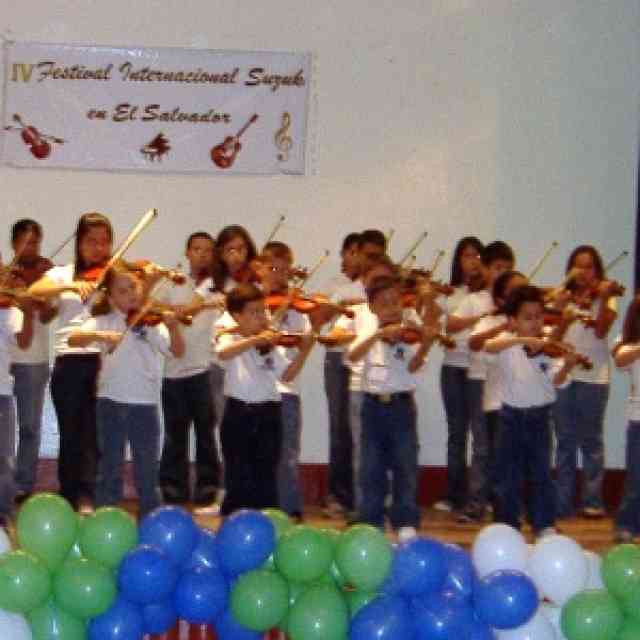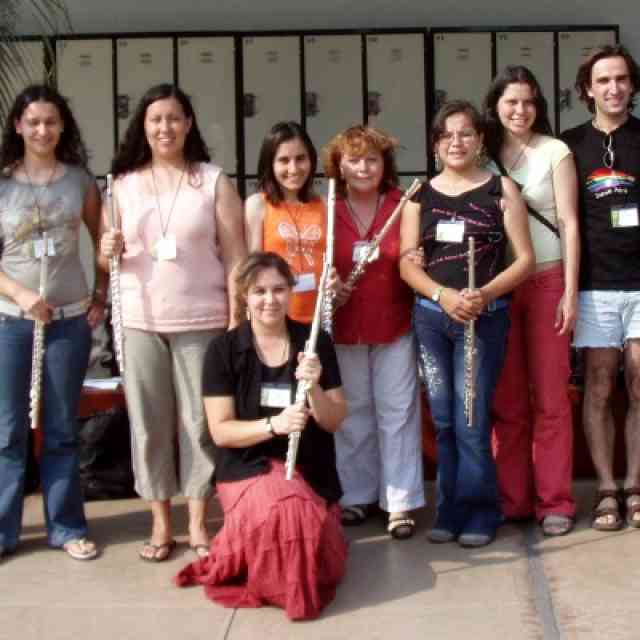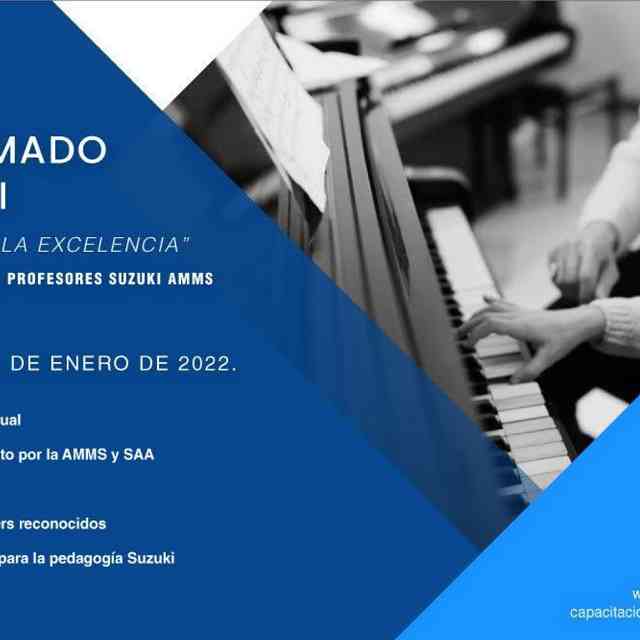Lima, Peru, January 8-27, 2007
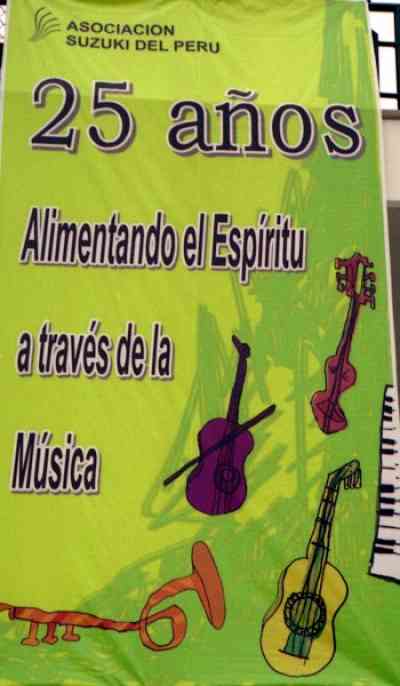
One of our most inspiring participants was Cecilia Zarate, a former Suzuki piano and violin student from Cordoba, Argentina, home to one of the oldest Suzuki programs in Latin America. Now a professional violinist and teacher, she had studied as a child with Eduardo Ludueña, now Latin America’s newest violin teacher trainer. Cecilia had come to Peru for Nancy Lokken’s course on “How to Teach Musicality,” and for Roxana del Barco’s and Lucha del Rio’s course on “Early Childhood Music.” At the Festival, Cecilia offered to play in the Teachers’ Orchestra that would accompany the student soloists. She asked me to give her the program a little early, a day before the first rehearsal. I had to tell her that it hadn’t yet been set. The program was announced on the morning of the first rehearsal. As she sat in the orchestra that afternoon, during the rests she lightly ran her fingers over her Braille transcriptions of the music. Afterwards, she apologized for occasionally confusing the bowings. A few days later, Cecilia played the entire orchestral concert repertoire from memory. Her serenity and joy was an example for us all.
This festival had many “firsts”.
-
Four new SAA teacher trainers gave courses; Mary Halverson Waldo (recorder), MaryLou Roberts (guitar), Kelly Williamson (flute) and Latin America’s first violin teacher trainer, Fernando Piñero from Argentina.
-
It was the first time in South America for teacher trainers Carey Beth Hockett (cello) and Nancy Lokken (violin).
-
SAA teacher training courses in recorder were offered for the first time in Latin America.
-
Guitar Book 7 was offered in Latin America for the first time.
-
For the first time in Latin America a teaching practice component was part of every course offered beyond book one.
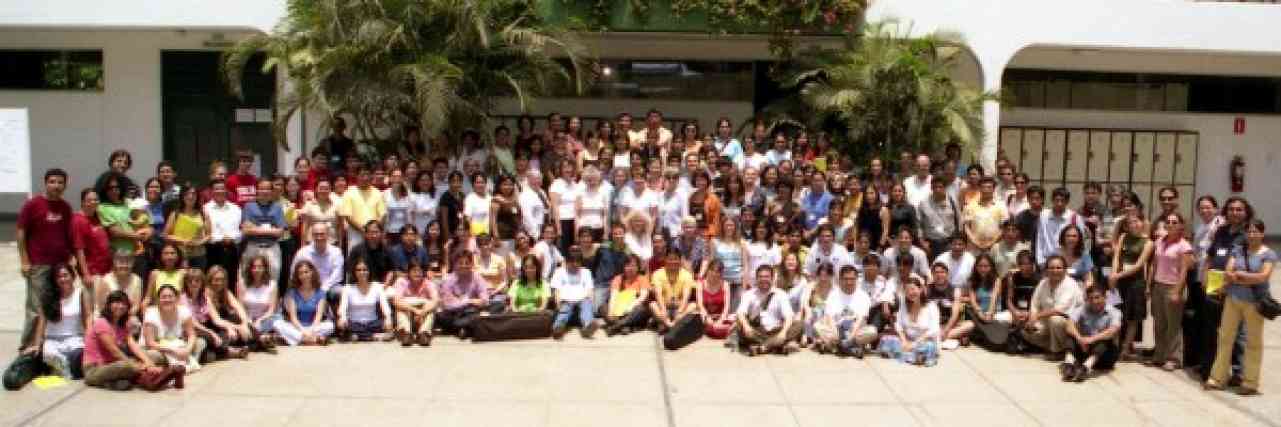
All participants at the Peru Festival.
Kelly Williamson from Canada comments:
There is great promise for Suzuki flute in Latin America. Returning for teacher training in Lima were two Peruvian teachers: Jaime, who studied book 3, and Renato, who took book 4. They had previously taken teacher training with David Gerry, who was unable to attend the festival due to his PhD studies. We were joined for the teaching strategies class by Florencia, one of Renato’s colleagues at the Lima conservatory, who had taken book 1 with David. There were also nine strong teacher participants in the book 1 class, from Argentina, Chile, Colombia, and Peru. Each had a clear vision of why they were in Lima to begin Suzuki teacher training, and I am excited that they will all be sharing this vision with their students at home.
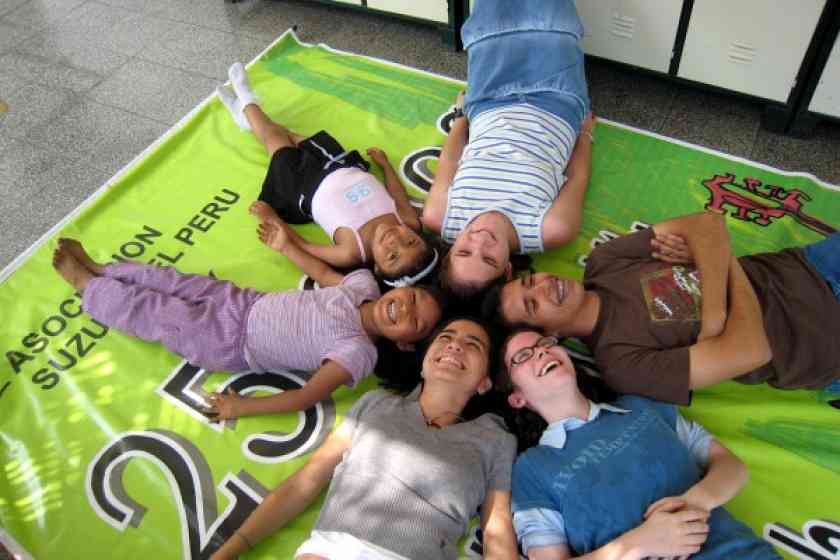
A circle of smiles.
Eugenia from Argentina is director at a large conservatory. She wants to encourage all of her staff to undertake Suzuki training, and she thought that the best way to encourage them was to take training herself—an excellent idea, which I wish other administrators might adopt! Laura and Diana are university music students from Colombia, and Keyla and Erika are conservatory graduates from Peru—all are fine musicians who ave a sincere appreciation for the Suzuki philosophy and for excellence in teaching. Winivere (from Arequipa, Peru) started a flute program only a few years ago, and already has more than thirty students, due to her emphasis on flute choir and community performances. She was excited by the many possibilities offered by Suzuki group classes, and eager for ideas on how she could integrate her existing students into the Suzuki methodology.
Cecilia from Argentina was referred to the Festival by Fernando Formigo of Patagonia, who has also previously taken teacher training in Lima with David. (Fernando and I have corresponded for over a year, ever since Robin Erickson “hooked us up” through her project to help his students attend the Buenos Aires institute. See ASJ Winter 2006). Cecilia comes from a folk music rather than a classical music background—something that we used to advantage over the course of the week. Two members of the class didn’t actually have much of a background in flute at all. Abad, from Juliaca, Peru, is a clarinetist and teacher at a music school. He is going to be teaching flute students as well as clarinet students, and he worked hard to improve his flute skills and learn the Book 1 repertoire.
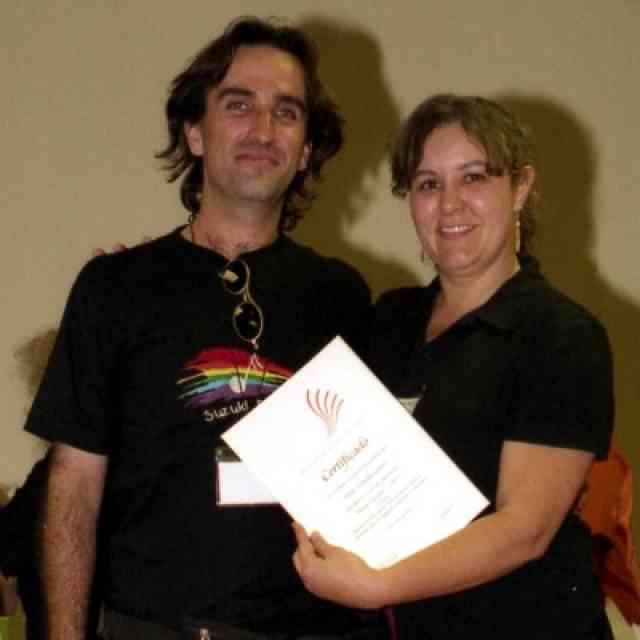
Pablo and Kelly.
Pablo, our lone classmate from Chile, is also a specialist on another wind instrument. His goal is to develop a Suzuki method for saxophone, and it was suggested to him by Caroline Fraser that the best way to understand how the method works, would be to take book 1 training in flute. In just ten weeks, he learned to play all of the Book 1 pieces by memory, and indeed it was a very valuable exercise in understanding all of the steps a beginner Suzuki flutist must pass through! Pablo is also working on a thesis, comparing and integrating the philosophies of Shinichi Suzuki, Maria Montessori, and Georges Ivanovich Gurdjieff.
For me, highlights of the time we spent together included jamming in the courtyard with Cecilia and her friend Celeste, who taught me to play the Argentinian song “Luna Tucumana”, and playing it as a group in the closing concert, led by Cecilia and accompanied by Celeste and Mary Lou on guitar. It was also wonderful to meet and work with young Fernando of Huanuco, as well as with the other young flute participants from Lima: Antonella, Alcira, Alexandra, and Paul. Getting to know the translators, including our fantastic flute translator Lukas, was an opportunity that I appreciated very much…and I will never forget cramming into a taxi with Lukas, Joe, Mary, and Carey, to go and get burgers at Bembo’s when the cafeteria ran out of food on the first Saturday. (One day I will have the “loncherita” at Bembo’s!) I also enjoyed my very first lesson on quena (a traditional Andean flute), which was taught by Jaime and observed by Florencia and Renato. I couldn’t possibly list all of the special memories. All in all, my whole experience at the festival was thrilling, a once-in-a-lifetime opportunity.
Since our return to our home cities and countries, we are all following through and building on our shared experiences in Lima. Pablo has founded a FlautaSuzuki forum for the Book 1 group on Yahoo, and we have continued to exchange information by e-mail. Pablo and Diana have already written to the institute directors in Buenos Aires to inquire about Book 2 and 3 training this October. Eugenia reports that she has already convinced several of the teachers at the conservatory to take Suzuki teacher training. I have been writing about the wonderful people I met in Lima, practicing Spanish in my spare moments, and I even performed Mary had a Little Lamb on quena in a Suzuki school concert this past Sunday. All of this to say that my experiences in Peru and the friendships I made there have formed a permanent impression on my mind, and also on my heart, and I can’t wait to go back!
MaryLou Roberts comments:
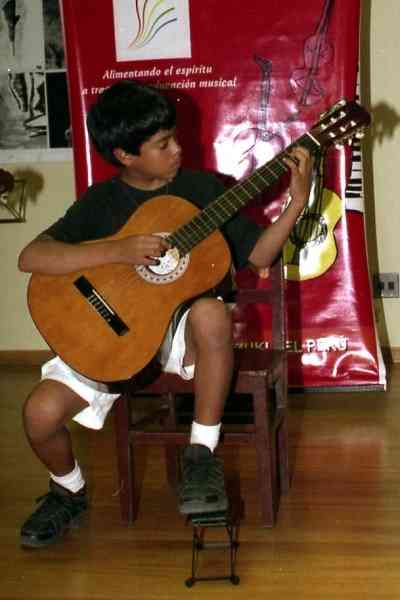
I liked the system of preparing the entire book fluently from memory. The guitar teachers taking training benefited not only from the teaching points in the music and training, but grew technically in their own playing as well. Everyone was happy to receive instruction, and eager with questions. There was lots of practicing in between classes, and rehearsing together outside of class. It took time and dedication on the part of each person. Students always respond so much to the enthusiasm of the teacher. I like the quote “teachers teach more by what they are than what they say”. (Heartland Samplers, Inc.) If as teachers we encourage fluency in our own playing, the students will be motivated to learn. We are the master song birds, teaching young songbirds how to sing beautifully.
Mary Halverson Waldo comments:
Walking through the classroom door to begin my first Book 1 Recorder Teacher Training course, I found an international room full of warm, smiling faces (26 in all !), and an energetic young Spanish speaking translator. What followed was a wonderfully memorable week of Suzuki Method for the recorder (that pure-sounding ancient instrument, which has changed fundamentally so little over hundreds of years) playing, learning how to teach, and learning from one another.
While the Suzuki Method for recorder has been put to excellent use in Peru for years by my good friend and colleague Lucia Nieto, January of 2007 is the first time that an SAA-registered teacher trainer has visited Latin America. I found the recorder to be an extremely popular instrument in Peru; it somewhat resembles a fascinating indigenous flute, called the quena. Unlike other instruments, the recorder (whether wooden or plastic) has very low maintenance requirements.
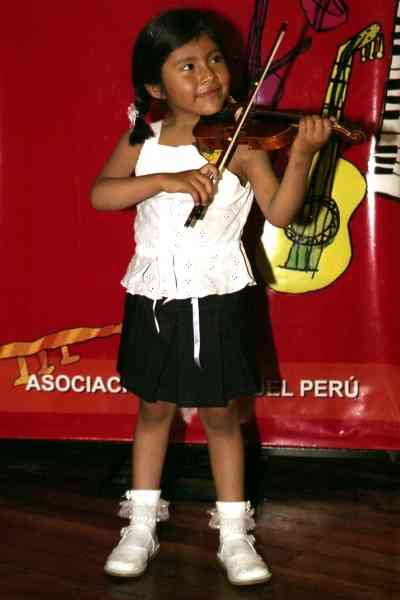
The overflowing Book 1 course actually took place during the second week of the festival. During the first week, I had the privilege of working with a group eleven skilled and experienced recorder teachers, covering the repertoire of Books 2 through 4. One of the teachers, Padre William Lopez, brought with him a group of four young teenage boys from his school in the poverty-stricken area of Huancavelia. The level of musicianship and technique was impressive, not only among many of the teacher participants, but also among the students.
Because of the many barriers in the past to SAA recorder teacher training in Latin America, the whole experience reinforced for me Dr. Suzuki’s words,” Where love is deep, much can be accomplished.”
Doris Koppelman comments:
I have recently returned from teaching at the 22nd International Suzuki Festival held each year in Lima, Peru. I have been there many times and each time I have been inspired and awed by the enthusiasm, love of music and desire to bring music to every child that is so much in evidence there.
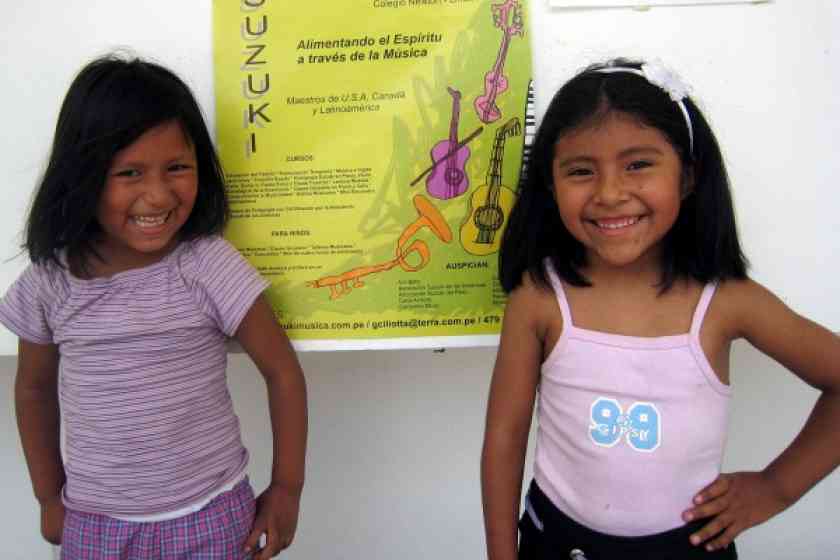
Two cousins with the Peru Festival poster.
I would like to tell you about one of the teachers in my Piano Book 3 class. His name is Orlando Hilares. Orlando is one of 5 children, 4 boys and a girl. Orlando and his brothers suffered a great deal as children. Their mother has emotional problems and their father has disappeared. All the boys grew up in a home. They were brought there by someone from their church. It is called Hogar Santa Maria and is home for around 120 boys aged 8-18. Orlando’s two youngest brothers still live there. The director of the home says that for every 10 children who are brought to the home, only 2 stay. The rest run away and return to living on the street. Orlando’s teenage sister has recently had a baby.
Orlando told me that as he was growing up he discovered a music teacher who came to the home to give occasional lessons. He was intrigued with this and tried to listen in on as many lessons as he could. Suzuki teachers visited the home. I was there for one such visit. The Suzuki teachers and students played for the children in the home. Then the children in the home played Peruvian music on Peruvian instruments for us. Then everyone danced together to the Peruvian music. I remember my energetic partner, a boy of about 10. Orlando’s love for music grew and his pianistic abilities developed through study. Every year when I came to Peru he would play something for me, as a student in one of my classes. He loves Bach. One year we worked on a Mozart Sonata. I sent him CDs to listen to. He was always full of enthusiasm.

